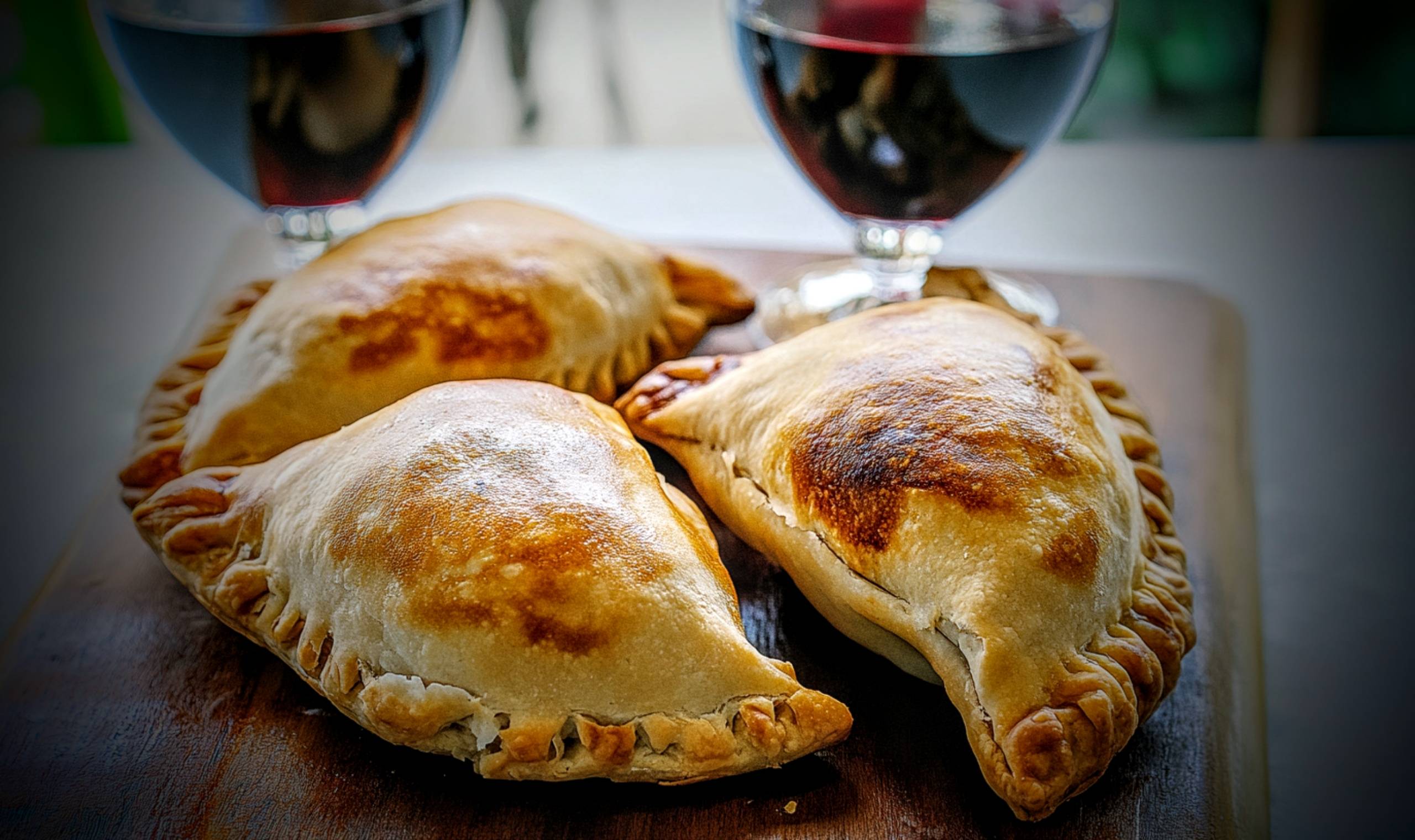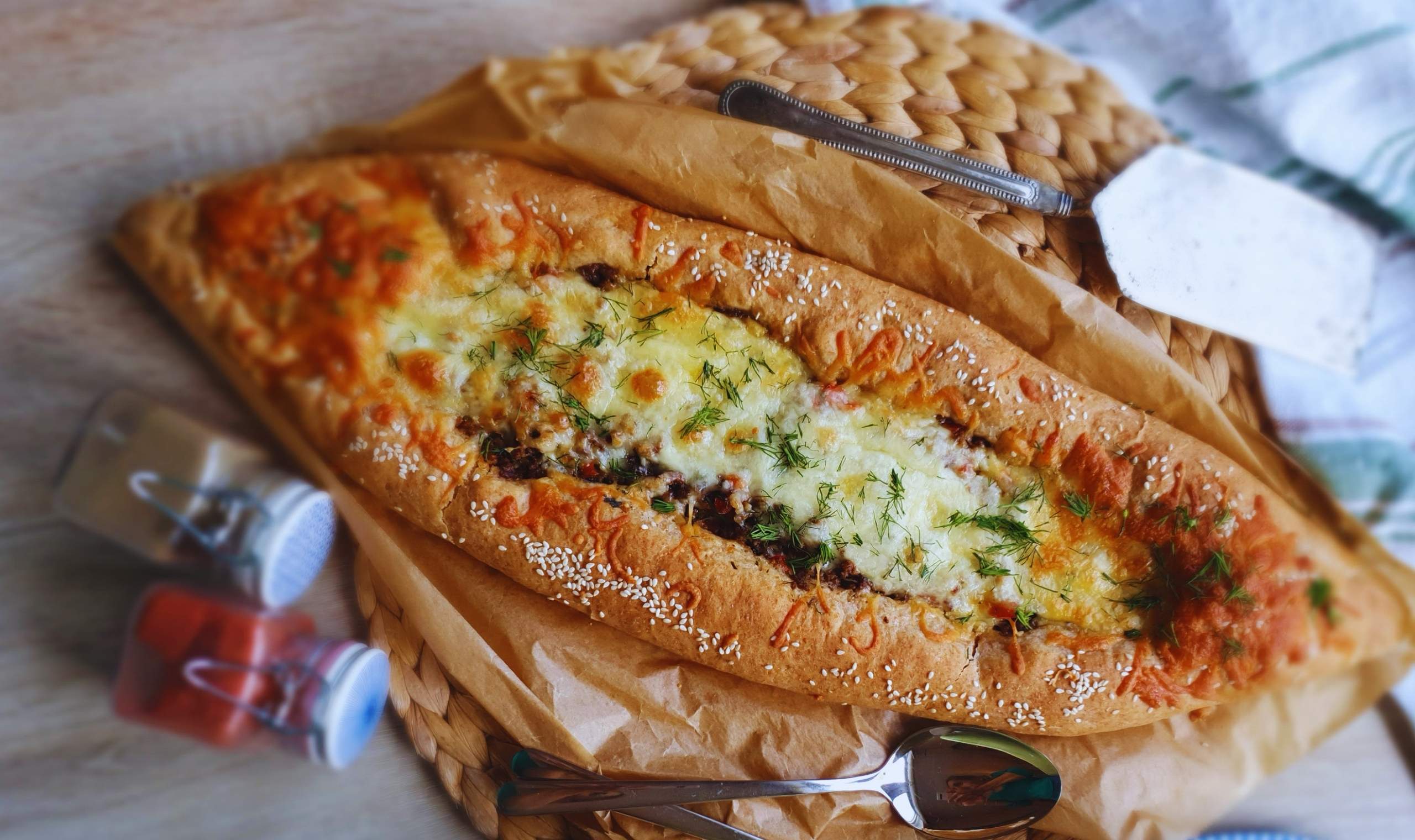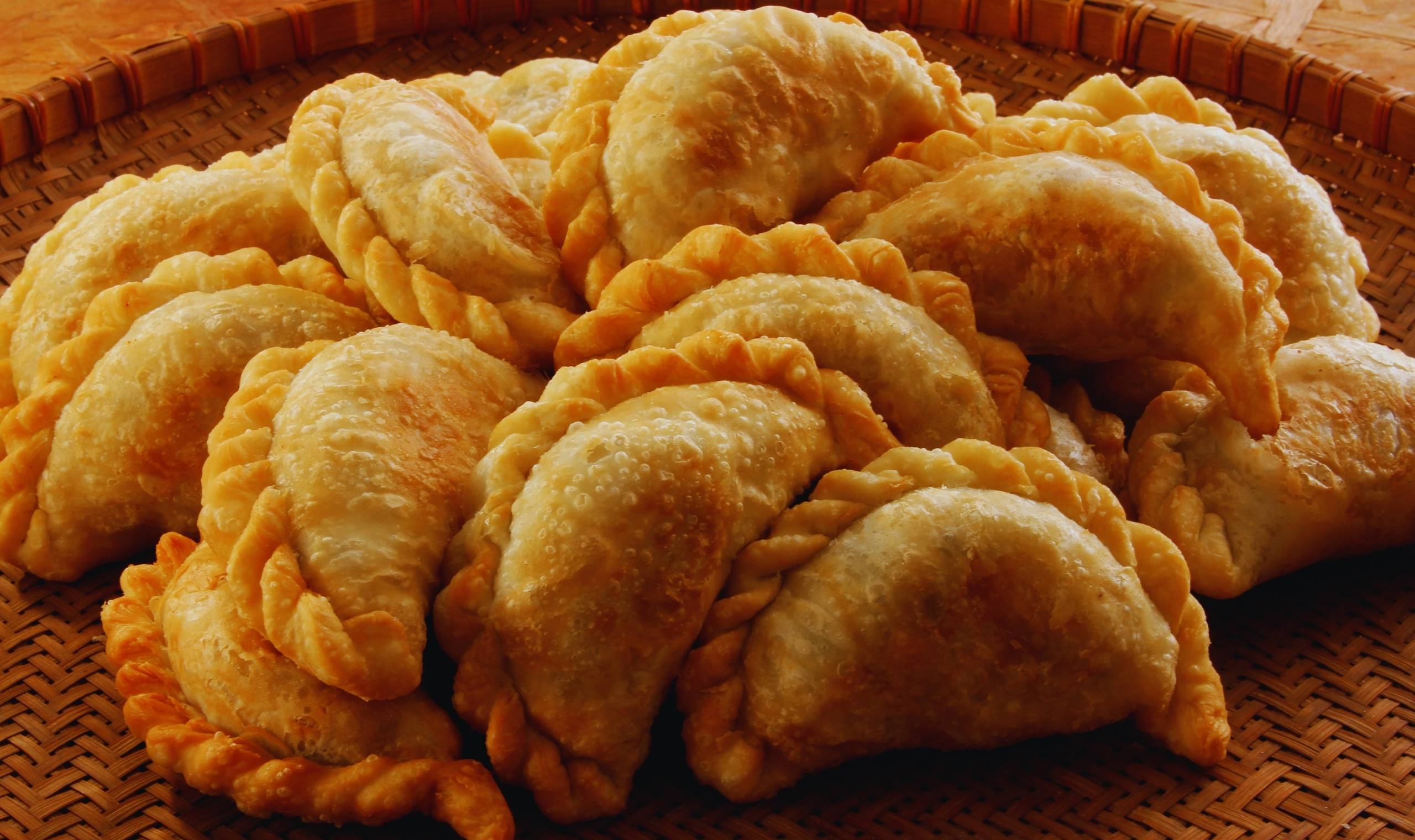Empanada de Pino: Chilean Savoury Goodness
When it comes to comfort food, the empanada de pino holds a special place in the hearts (and stomachs) of Chileans. This flaky, golden pastry, stuffed with a juicy mixture of beef, onions, olives, and a hard-boiled egg, is as much a national treasure as the Andes or Pablo Neruda. Whether baked to perfection or fried for extra indulgence, it’s the kind of dish that makes you feel like you’ve been wrapped in a warm culinary hug.
A Bite of History
The empanada de pino has its roots in Spain, where the idea of encasing fillings in pastry was already well-loved. When the Spanish colonised South America, they brought their empanada traditions with them. Over time, these pastries evolved in Chile, where they were adapted to local tastes and ingredients.
The word “pino” is said to derive from the Mapuche word “pĩnón,” referring to the pine nuts of the araucaria tree, though there’s little debate now that “pino” means the savoury mix of minced beef and onion. Chileans took this filling, added their own twists—like olives and raisins—and made it a staple for Independence Day celebrations and beyond.
Regional Twists to Try
While the classic empanada de pino is universal in Chile, subtle regional variations keep things interesting. In central Chile, the dough is often baked to a perfect golden hue, creating a flaky exterior that contrasts beautifully with the juicy filling. Head to the south, and you might find empanadas stuffed with a more generous helping of raisins or even a dash of cream to enrich the mix.
In coastal regions, seafood empanadas take the stage, but even here, the pino variety holds its ground. Some recipes swap beef for lamb in Patagonia, where the richness of the meat mirrors the rugged landscape. Each version pays homage to the empanada’s versatility while keeping its essence intact.
Drinks That Do Empanadas Justice
Empanadas de pino practically beg to be paired with a good drink. In Chile, a glass of red wine—preferably a bold Carmenère—is the traditional choice. The fruity notes and subtle spice of the wine complement the richness of the filling perfectly.
If wine isn’t your thing, a cold pisco sour adds a zesty twist to the experience, cutting through the pastry’s buttery layers. And let’s not overlook beer: a light lager or a refreshing pale ale makes a great match, especially if you’re munching on a fried version.
The Perfect Accompaniments
While an empanada de pino is a meal in itself, a few sides never hurt. A simple tomato salad with onions and coriander adds a fresh counterpoint to the pastry’s richness. Or try pebre, a Chilean salsa made with tomatoes, onions, chillies, and coriander, which works wonders as a dipping sauce.
For a more substantial spread, serve your empanadas with a bowl of porotos granados (a hearty bean stew) or some roasted corn on the cob. And if you’re ending with dessert, nothing beats a sweet sopaipilla drizzled with chancaca syrup.
The Art of the Perfect Dough
The secret to a great empanada de pino lies in the dough. It should be sturdy enough to hold the filling but tender enough to flake apart with each bite. Traditional recipes use lard for extra flavour and texture, though butter or vegetable shortening works just as well. A pinch of paprika in the dough can add a subtle, smoky depth, elevating it from ordinary to extraordinary.
The dough is rolled thin, filled generously, and sealed with care to avoid any tragic leaks. Whether baked to golden perfection or fried to a crispy finish, it’s the envelope that makes the filling truly shine.
Why the Filling Matters
The pino filling is the heart and soul of the empanada. A perfect pino starts with onions—lots of them—sautéed until soft and sweet. Minced beef is added, along with a careful balance of spices like cumin, paprika, and oregano. A handful of raisins adds a surprising sweetness, while green olives and a slice of hard-boiled egg provide bursts of saltiness and richness.
The key is in the balance: no ingredient should overpower the others. When done right, the filling is juicy, flavourful, and just a little bit messy—a sign of true empanada success.
A Recipe for Empanada de Pino
Ingredients:
For the dough:
- 500g plain flour
- 100g lard (or butter, chilled and cubed)
- 1 tsp salt
- 200ml warm water
- 1 egg, beaten (for brushing)
For the filling:
- 2 tbsp vegetable oil
- 2 large onions, finely chopped
- 500g minced beef
- 1 tsp ground cumin
- 1 tsp paprika
- 1/2 tsp dried oregano
- Salt and pepper to taste
- 50g raisins
- 50g green olives, pitted
- 2 hard-boiled eggs, sliced
Method:
To make the dough, mix the flour and salt in a bowl. Rub in the lard until the mixture resembles breadcrumbs. Gradually add warm water, mixing until the dough comes together. Knead lightly, wrap in cling film, and let it rest for 30 minutes.
For the filling, heat the oil in a pan and sauté the onions until soft. Add the minced beef and cook until browned. Stir in the cumin, paprika, oregano, salt, and pepper. Mix well, then add the raisins. Let the filling cool slightly.
Preheat your oven to 200°C (180°C fan). Roll out the dough and cut it into circles about 15cm in diameter. Place a spoonful of the filling in the centre of each circle, adding an olive and a slice of egg. Fold the dough over and crimp the edges to seal.
Place the empanadas on a baking tray, brush with beaten egg, and bake for 20-25 minutes, or until golden brown. Serve warm with your favourite sides and enjoy a little taste of Chilean tradition.



